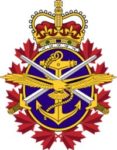Pierre-Guy Veer provides a guided tour of Canada’s supply management system, with appropriate emphasis on the role Quebec dairy producers play in keeping the anti-competitive system in place:
Spared by the North American Free Trade Agreement in 1994, the Canadian milk supply restrictions are “in danger” again. Because of trade negotiations with the US and Europe, foreign farmers want better access to the Canadian market.
However, hearing complaints from the US about unfree dairy markets comes as paradoxical. Indeed, since the Great Depression, the dairy industry has been anything but free. It profits from various subsidies programs including “the Dairy Price Support Program, which bought up surplus production at guaranteed prices; the Milk Income Loss Contracts (MILC), which subsidized farmers when prices fall below certain thresholds, and many others.” It even came close to supply management in 2014, according to the Wilson Center.
But nevertheless, should US farmers ever have greater access to Canadian markets, it won’t be without a tough fight from Canadian farmers, especially those from the province of Quebec. Per provincial Agriculture Ministry (MAPAQ) figures, the dairy industry is the most lucrative farm activity, accounting for 28% of all farm revenues in the province, but also 37% of national milk revenues in 2013. “La Belle Province” also has 41% of all milk transformation manufacturers in Canada.
As is almost always the case with “protected” domestic markets, the overall costs to the Canadian economy are large, but the potential benefit to individual Canadian consumers for getting rid of supply management is relatively small (around $300 per year), but the benefits are tightly concentrated on the protected dairy producers and associated businesses.
But even though the near entirety of the population would profit from freer dairy markets, their liberalization will not happen anytime soon.
Basic Public Choice theory teaches that tiny organized minorities (here: milk producers) have so much to gain from making sure that the status quo remains. A region like Montérégie (Montreal’s South Shore) produced over 20% of all gross milk revenues in 2016. There are 23 out of 125 seats in that region, making it the most populous after Montreal (28 seats). So if a politician dares to question their way of living, milk producers will come together to make sure he or she doesn’t get elected. Libertarian-leaning Maxime Bernier learned it the hard way during the Canadian Conservative Party leadership race; producers banded together – some even joined the Conservative Party just for the race – and instead elected friendlier Andrew Scheer.
On the provincial level, all political parties in the National Assembly openly support milk quotas. From the Liberal Party to Coalition Avenir Québec and to Québec Solidaire, no one will openly talk against milk quotas. However, and maybe unwillingly, separatist leader Martine Ouellet gave the very reason why milk quotas are so important: they keep the dairy industry alive.





